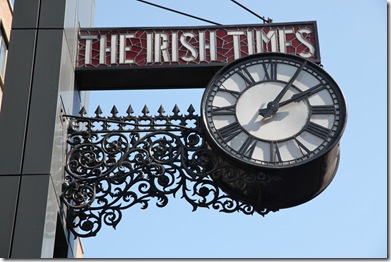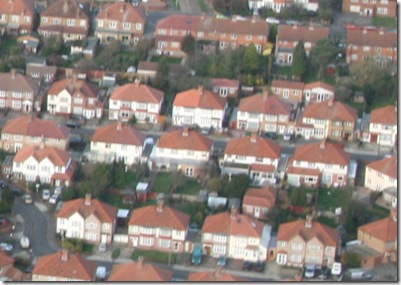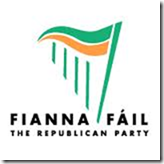I have been observing the relationship between the National Treasury Management Agency and the National Assets Management Agency with the Public Accounts Committee with increasing concern.
NTMA and NAMA Remuneration
The activities of the NTMA and NAMA have been examined on several occasions by the Public Accounts Committee in 2010, most recently on 18 November when the Committee sought a breakdown of the remuneration paid to NAMA employees – all seconded to NAMA from NTMA. The Chief Executive of NAMA, Mr Brendan McDonagh in a letter to the PAC dated 7 December 2010 defied the Committee and advised:
That he discussed the Committee request with Mr John Corrigan, Chief Executive of NTMA – but not, curiously, with the Secretary General of the Department of Finance, an ex officio member of the statutory NTMA Advisory Committee and principal advisor to the Minister for Finance to whom both agencies are accountable.
- That the pay structures in NTMA are outside of public service pay structures (as authorised by the National Treasury Management Act 1990).
- That the NTMA recruit mid-career specialists in banking, property, corporate finance and law for NAMA on what he termed a ‘fixed purpose’ contracts.
- The contract and remuneration arrangements of each employee are unique to a particular individual and are treated as confidential.
- The NTMA/NAMA staffing ‘operating model’ is shrouded in so much secrecy and opacity that colleagues do not know how much each other is paid and that NAMA would apparently be seriously compromised in the conduct of its mandate were it to be exposed – (presumably, to the rigours of public and media scrutiny and that of the marketplace from which NAMA seeks to determine ’ market competitive’ salaries).
- ‘Operational freedom to negotiate’, authorised by legislation, in NTMA has apparently become seamlessly synonymous with clandestine secrecy by the Chief Executive of a State agency which does not have a conventional board of directors and where the same chief executive, rather than an independent chairman, corresponds with the Minister for Finance on the performance of the entity that he manages on a day-to-day basis.
McDonagh’s letter and Corrigan’s patrician perspective on the Committee’s request is such an appalling indictment of these State agencies that a citizen would wonder about its capacity to fulfil its core objectives in a culture clearly devoid candour, accountability and transparency. NTMA and NAMA need to be advised in blunt and uncompromising terms by the PAC that the principles of transparency and accountability expected of the Irish public sector are not those of the nod, wink and handshake that prevail, for example, in the dictatorships of North Korea and Burma. The standards espoused by NTMA also directly contravene the policy of the Department of Finance with respect to the governance of commercial State entities.
Furthermore, this is precisely the self-righteous, conniving, corporate attitude which champions generic, non-itemised accounting that prevailed in FÁS, the HSE SKILL Programme, the Health Services National Partnership Forum and other grossly dysfunctional State entities which have shattered public confidence after the wanton squandering of hundreds of millions of euro with abandon.
Transparency has not compromised the ‘operating model ‘or the efficiency and effectiveness of any the debt management agencies in any other OECD country. The transparency of these agencies would also suggest that the NTMA is an excessively costly agency compared to its counterparts.
NTMA Costs and Operating Efficiency
The activities of NTMA remained substantially the same in scope between 2000 and 2008 with the exception of the establishment of the National Development Finance Agency in 2003. Between 2000 and 2007 Ireland’s national debt ranged from €36.5 billion to €37.5 billion. It increased to €50.3 billion in 2008, an overall increase of 38% since 2000.
But the operating costs of NTMA in that period increased by 314% and remuneration, including superannuation, by 365%.
NTMA held nine bond auctions in 2009 and raised €35.4 billion which brought the National Debt to €75.1 billion. Salary and pension costs were €22.86 million, or an average of €135,384 per person. Total expenses in 2009 at €39.4 million were significantly ahead of other OECD government debt management offices. Debt servicing costs as a percentage of year-end national debt, excluding sinking fund payments, in this period were:
| 2000 | 5.74% |
| 2001 | 5.25% |
| 2002 | 4.66% |
| 2003 | 4.78% |
| 2004 | 4.53% |
| 2005 | 4.61% |
| 2006 | 5.31% |
| 2007 | 4.29% |
| 2008 | 5.24% |
Australian Office of Financial Management
The Australian counterpart of NTMA is the Australian Office of Financial Management (AOFM). It raised €38.9 billion by approximately 100 competitive tender in the year to 30 June 2010. Apart from managing the Australian national debt AOFM invested €12 billion in residential mortgage-backed securities to provide funding for small mortgage lenders. Total expenses for the year amounted to €11.5 million – less than ⅓ of what it costs to run NTMA. The salary, pension and fringe benefits of Neil Hyden, the recently retired chief executive of AOFM, cost €250,000. The remuneration, superannuation and fringe benefits of the 36 staff of AOFM amounted to €3.94 million in the year to 30 June 2010, or an average of €109,502 per person. Approximately 60% of Australia’s government bonds are held by non-Australian residents - compared to 84% foreign ownership in the case of Ireland’s Government bonds.
HM Debt Management Office
The British counterpart of NTMA is the Debt Management Office. Employing a staff of 112 persons, it raised €267 billion on the bond market in the year ended 31 December 2009 in 58 major and 13 minor auctions – a scale of borrowing 7.6 times greater than that of NTMA. The activities of the DMO also include the administration of the UK Credit Guarantee Scheme in respect of debt issued by banks and building societies and the Emissions Trading System in the UK. The salary, pension and fringe benefits of Robert Stheeman, Chief Executive of the DMO was €188,000 – some €12,000 less than the 2009 bonus of Dr Somers. The net operating cost of DMO operating in the City of London in 2009 was €18.5 million – less than 50% of the overhead to run the NTMA in Grand Canal Street Dublin.
Chief Executive’s Bonus
It was officially disclosed last week that Dr Michael Somers, the founding chief executive of NTMA received a bonus of €200,000 in respect of 2009. It was reported in the media last September that Dr Somers received a bonus of €400,000 apparently bringing his total remuneration to €1 million.
Ireland enjoyed the considerable advantage of lower level government debt relative to GDP for much of the decade to 2008. Investor perception of Ireland was positive and reflected in excellent credit ratings; an economy that was perceived to be robust; a positive fiscal outlook and attractive yields on Irish debt. Irish debt was adopted enthusiastically by investors. There is no withholding tax on Irish bonds thus removing a barrier to investment for foreign investors unwilling, or unable to invest in assets subject to withholding tax. Was this bonus merely based on surfing these positive circumstances or what precisely was Dr Somer’s contribution to making a distinctive difference which benefited taxpayers? The citizen is left scavenging the internet for clues because the agency conveys no information whatsoever on this issue. The public are treated with the same bland contempt that occurred days before the recent arrival of the IMF and ECB to take economic control by the scruff of Ireland’s emaciated neck.
It would be helpful if this key agency of the Department of Finance were to publish the fullest details of all executive remuneration for each of the last 10 years. This, in the case of bonus payments should identify achievements against particular objectives and confirmation of who approved objectives, achievement and bonus payments.
Department of Finance Code, 2 October 2001
State bodies, including the subsidiaries of such bodies, are required in the conduct of their operations to adopt this Code of Practice promulgated by the Department of Finance and advocated by the Director of Corporate Enforcement.
The Code of Conduct for the Governance of State Bodies states that the remuneration of a chief executive of a State agency and the remuneration of the chief executive of any subsidiary should be subject to audit and set out in the entities annual report which should state:
- The basic salary
- Payments made under a performance-related pay scheme
- The total value of the chief executives superannuation benefits, with a breakdown between standard entity superannuation benefits and any additional benefits being provided for the chief executive
NTMA has consistently disregarded this guidance. S6.(3) of the National treasury Management Act 1990 provides that the terms and conditions relating to the remuneration of the Chief Executive of NTMA are determined by the Minister for Finance after consultation with the Advisory Committee – on which the Secretary General of the Department of Finance is an ex officio member. State agencies are required to implement Government pay policy, as expressed from time to time, in relation to other staff, including the chief executive and other staff of any subsidiary.
The Department of Finance, in the case of NTMA, is expected to be consulted, according to this guidance, in good time on any pay proposal, or likely development, that could have significant implications for (i) general Government pay policy (ii) NTMA finances (iii) charges for goods and services provided and / or (iv) other areas of the public sector. Compliance with Government pay policy, or with any particular Government decision, should not be effected in ways which cut across public service standards of integrity or conduct or involve unacceptable practices which result in a loss of tax revenue to the Exchequer.
The annual report of a State entity should include a schedule of the fees and aggregate expenses paid to each of the directors – or, presumably, in the case of NTMA, to each member of the Advisory Committee
There is, therefore, an obligation on the Secretary General of the Department of Finance to explain the remuneration trends at NTMA and very particularly, the remuneration arrangements between the chief executive and the Minister for Finance to the Public Accounts Committee. How can he sit on the Advisory Committee and observe long-standing policies of his own department ignored? That slipshod attitude to supervision allowed FÁS function as a ceded territory dominated and unilaterally controlled and dominated by the chief executive who, in practice was accountable to nobody.
Consultancy & Legal Expenses
NTMA has become a large-scale purchaser of legal and consultancy services. Details should be provided of the number and value of contracts in each financial year, differentiating between new and existing contracts.
The annual report should, in the case of consultancy contracts with a value of €10,000, or more, identify the consultant concerned; describe the service provides; confirm the price of that service; details of the selections process and the justification for using the services – to demonstrate transparency and compliance with relevant regulations and directives. Taxpayers should not have to scavenge internet search sites or surveys of the highest revenue earning professional firms in Europe to distil how much revenue Irish professional firms are obtaining from public sources.





 There is clearly no shortage of resources at Údurás na Gaeltachta judging by the 2009 Annual Report which was published on their web site just as our new sovereign leadership (IMF and ECB) arrived in Dublin. Perhaps their reticence is understandable because this report certainly prompts some critical and penetrating questions.
There is clearly no shortage of resources at Údurás na Gaeltachta judging by the 2009 Annual Report which was published on their web site just as our new sovereign leadership (IMF and ECB) arrived in Dublin. Perhaps their reticence is understandable because this report certainly prompts some critical and penetrating questions.









